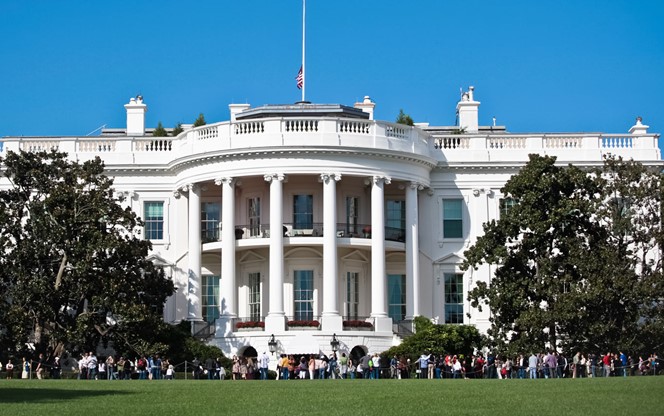

Compliance News | July 11, 2025
On July 4, 2025, President Trump signed into law tax and budget reconciliation legislation that will have a profound impact on Americans. The legislation dramatically increases funding for border control and defense spending, increases the debt ceiling, and permanently extends many of the tax cuts that were enacted in 2017 in the Tax Cuts and Jobs Act (TCJA).

Share this page
Of critical importance, the legislation, formally known as the “One Big Beautiful Bill” Act (the Act, Public Law No: 119-21), does not include any changes to the taxation of or deduction for health benefits, an issue that is a concern to plan sponsors. It also does not change the tax incentives for retirement benefit plans.
Employee benefit plan sponsors will need to review several parts of the Act, particularly those related to Health Savings Accounts (HSAs) and certain other fringe benefits. They also should be aware of other health-related portions of the Act that may have an impact on both participants and overall health spending trends.
Three provisions in the Act make it easier to use HSAs:
The Act defines a direct primary care service arrangement as consisting solely of primary care services provided by primary care practitioners if the sole compensation for such care is a fixed periodic fee. Fees must not exceed $150 per month for an individual or $300 per month for more than one person. Additionally, services cannot include procedures that require the use of general anesthesia, prescription drugs (other than vaccines), and laboratory services not typically administered in an ambulatory primary care setting. The Treasury Department will issue regulations or guidance on this issue, in consultation with the Department of Health and Human Services (HHS).
Furthermore, the Act allows fees paid for direct primary care service arrangements to be treated as medical expenses that can be payable from the HSA.
The Act does not contain additional provisions to expand HSA access that were in the bill passed in the House, including provisions that would have permitted individuals in Medicare Part A to contribute to an HSA.
The Act modifies several exclusions for employer-provided fringe benefits for tax years beginning after December 31, 2025:
The Act also enhances the child and dependent care tax credit, which may be claimed as a credit against tax liability by an individual in lieu of taking the DCAP exclusion.
Under IRC Section 45F, employers are eligible to receive a nonrefundable tax credit of up to $150,000 per year based on 25 percent of qualified childcare expenses they provide to employees. The Act permanently increases the maximum credit, creates a separate credit amount for qualified small businesses, and indexes the maximum credit amounts for inflation. Effective for amounts paid or incurred after December 31, 2025, the maximum credit will increase from $150,000 to $500,000 ($600,000 for small businesses) with those dollar amounts being indexed for inflation; and the percentage of qualified childcare expenses covered will increase from 25 to 40 percent (50 percent for small businesses). The Act also allows small businesses to use a third-party intermediary to provide childcare services on their behalf.
Under IRC Section 45S, employers that provide paid family and medical leave can claim a tax credit, which is a percentage of wages paid to employees while on family and medical leave. The percentage of wages is 12.5 percent and increased based on the amount paid to a qualifying employee that exceeds 50 percent of the employee’s wages, with a maximum of 25 percent. To claim the tax credit, employers must have a written policy in place that provides for at least two weeks of paid family and medical leave annually to all full-time employees, with paid leave equal to at least 50 percent of the wages normally paid to the employee. The tax credit is available to employers in all states; however, amounts required under state law or paid for by the state are not taken into account in determining the credit.
The Act makes permanent this paid family and medical leave tax credit and enhances it for taxable years beginning after December 31, 2025. First, the Act allows employers to claim the credit if they have a stand-alone insurance policy for paid family leave benefits. It also lowers the minimum employee work requirement to receive the credit from one year to six months.
The Act creates a new tax-preferred savings account for children under age 18 called the “Trump Account.” Beginning January 1, 2026, these accounts will operate like individual retirement accounts that allow earnings to grow on a tax-free basis. Parents, relatives or other entities may contribute up to $5,000 annually after tax (indexed for inflation) up to age 18, with exceptions to the maximum for certain entities.
Children who are born from 2025 through 2028 will be automatically enrolled and receive a one-time deposit of $1,000 from the federal government into their account.
Under a new IRC Section 128, employers may contribute to an employee’s child’s account on a tax-free basis. The employer must have a separate written plan document to make such contributions, and the plan is subject to nondiscrimination rules under IRC Section 129. Employers may contribute up to $2,500 for each employee, and that amount is indexed beginning in 2027.
The accounts must be held by a financial institution and invested in a qualified equity index fund. Further regulatory guidance will be forthcoming from the Treasury Department.
The Act provides temporary changes to the taxation of tips and overtime from 2025 through 2028. It temporarily allows an above-the-line deduction of up to $25,000 for qualified tips, which is phased out at higher incomes. It also allows an above-the-line deduction of up to $12,500 ($25,000 for a joint return) for qualified overtime compensation.
The Act has a significant impact on the U.S. health system generally because it imposes $1 trillion in cuts to Medicaid and ACA programs. The legislation is estimated to cut Medicaid funding by $940 billion over 10 years, according to an analysis by the Congressional Budget Office (CBO). Medicaid cuts will come in the form of new work requirements, more frequent eligibility verification, new cost-sharing copayments for certain Medicaid beneficiaries and limits on state provider taxes.
The Act also reduces support for the ACA Exchanges/Marketplace by more than $200 billion, including changing premium assistance tax credit eligibility and verification rules. Together, the CBO estimates that these changes would cause 11.8 million people to become uninsured over 10 years.
Separate from these cuts, the Act failed to extend the enhanced ACA subsidy expansion, initially part of COVID relief, beyond December 31, 2025. These enhanced subsidies significantly lower the cost of coverage on the ACA Exchanges and resulted in Exchange enrollment increasing to almost 25 million in 2025. Furthermore, the expiration of the enhanced subsidies is expected to result in an increase in premiums for Exchange coverage. As a result, the CBO analysis indicates that 5.1 million people would become uninsured due to the failure to extend these enhanced subsidies. Unlike some of the Medicaid changes, which generally begin in 2027, these ACA subsidies will be eliminated in 2026, resulting in individuals losing Exchange coverage as early as January 2026.
Plan sponsors should work with their professional service providers to ensure that they understand the new law and accommodate the changes it requires into benefit systems and policies. Employers may wish to consider operational and tax strategy changes in light of the Act’s provisions.
Additionally, plan sponsors should also be aware of the possibility that individuals who lose coverage could seek to enroll in employment-based plans, if they have previously avoided them because of high employee premium contributions. Dependents who previously did not enroll in employment-based coverage because of cost may seek to enroll in 2026 if ACA Exchange premiums increase significantly. Plan sponsors may see requests for new enrollments both at open enrollment and as a special enrollment when coverage is lost.

Health, Multiemployer Plans, Public Sector, Healthcare Industry, Higher Education, Architecture Engineering & Construction, Corporate

Health, Compliance, Multiemployer Plans, Healthcare Industry, Public Sector, Higher Education, Architecture Engineering & Construction, Corporate

Compliance, Health, Multiemployer Plans, Public Sector, Healthcare Industry, Higher Education, Architecture Engineering & Construction, Corporate
This page is for informational purposes only and does not constitute legal, tax or investment advice. You are encouraged to discuss the issues raised here with your legal, tax and other advisors before determining how the issues apply to your specific situations.
© 2025 by The Segal Group, Inc.Terms & Conditions Privacy Policy Style Guide California Residents Sitemap Disclosure of Compensation Required Notices